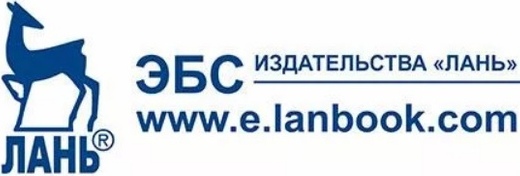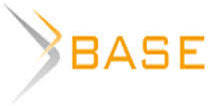Using video in the process of teaching a foreign language at a university
Aннотация
The article is devoted to the up-to-date topic of using video materials. The authors consider it as one of the most effective means of developing foreign language communicative skills of students, which is a priority in teaching foreign languages to students of non-linguistic specialties at the university, and is dictated by the requirements of the Federal State Educational Standard (FSES).The purpose of the article is to analyze the literature on the feasibility of using video clips at foreign language classes, as well as to demonstrate the capabilities of video, which allow you to use it as the most effective tool in the context of a modern approach to teaching foreign languages at a University. The article describes the advantages of using video at classes, which makes it possible to use both verbal and non-verbal channels of perception of information and creates the atmosphere of real communication. The use of video materials is considered in the article not only as a source of lexical, country-specific, socio-cultural, professionally-oriented information, but also as an important way to form complex communication skills. It is not only interesting and attractive for students, but also very popular among teachers as a technique that helps to optimize the process of mastering language material and increase motivation to learn a foreign language. The article describes the need to use authentic video in teaching as a way to simulate the language environment in the classroom. The authors classify video materials by type, and it can greatly facilitate the teacher's choice of video material adequate to the topic, level of training, and interests of students. Considerable attention is paid to the analysis and systematization of requirements for video materials, the use of which in the work of a teacher contributes to a competent and appropriate methodological organization of the educational process. The article analyzes approaches to the classification of stages of working with video fragments and offers its own universal classification. It enables to use a variety of modes of operation and develop a system of exercises aimed at developing the communicative competence of students.
Ключевые слова: communicative competence, use of video materials, system of exercises, communication, viewing modes, stages of work
К сожалению, текст статьи доступен только на Английском
Introduction. Modern society makes high demands of graduates of higher education, and the socio-economic conditions in which we live today require the implementation of an educational policy focused on training highly qualified specialists who possess communicative competence, i.e. the ability and willingness to carry out foreign-language interpersonal and intercultural communication with native speakers. The acquisition of communicative competence outside the language environment is a common phenomenon in the learning environment, but modern technical means allow teachers of foreign languages to use audiovisual tools, which are now widely represented by authentic video fragments. “Watching various movies in foreign languages is one of the best ways to fill up your vocabulary with modern colloquial expressions of any foreign language. An experienced teacher probably has an extensive store of movies in a foreign language”(Grigorenko, Sagalaeva, Fisunova, 2018), the use of which contributes to the optimization of teaching foreign languages at the university, i.e. “is aimed at the complex development of communicative, cognitive, informational, socio -cultural, professional and general cultural competence of students“ (Masalova, 2015), and is a priority of higher education, which in turn shows the relevance of the topic of our article.
Main Part. The goal of the work is to study the greatest effectiveness in the use of audiovisual tools in teaching a foreign language and justify updated approaches and techniques for their application, based on modern requirements for the educational process. In this regard, there is a contradiction associated with the fact that the academic hours allocated to study a foreign language at a University are limited and the requirements for the quality of foreign language proficiency of graduates are imposed. Thus, the problem that has arisen is the need to research ways to optimize the learning process, using modern technical tools and modern methods of using video in foreign language lessons, which make it possible to teach educational material in a more intensive and effective mode.
The novelty of the work lies in the fact that the article offers techniques for working with video materials in modern educational system.
The subject of our research is the use of video materials as one of the most effective means of teaching a foreign language.
The object of the work was video materials and tools that can be used in foreign language lessons.
The purpose of the article is to analyze advantages of this training tool, summarize and show the possibility of using video materials as the most effective tool used at foreign language classes in modern higher education and aimed at forming the communicative competence of students of foreign language specialties.
This purpose is achieved through the following tasks:
1. To analyze the methodological literature on the problem;
2. To classify videos according to their types;
3. To formulate requirements for video materials necessary for the compliance and increase the efficiency of learning foreign language material;
4. To identify and classify the stages of working with video material;
5. To identify the feasibility of using different operating modes;
6. To analyze the feasibility of using different types of exercises at all stages of working with video material.
Research methodology and methods. Study and analysis of methodological literature, synthesis, generalization of opinions and reviews of colleagues and students studying foreign languages, systematization and evaluation of the information received, analysis of video materials used in the course of classes in the disciplines “Foreign language”, “Foreign language (professional)”.
The article is based on modern scientific research made by such authors as T.P. Leontyeva, E.A. Lobanov, E.N. Solovova, G.A. Gunasheva, Yu.A. Komarova, D. Wehage et al. as well as electronic-methodical complexes of studied disciplines.
The results of the study and their discussion. In the narrow sense, the word “communication”is considered as a process that results in the exchange of information expressed in the form of speech communication, as well as using other information exchange systems that complement speech communication (intonation, posture, gestures, facial expressions, music (voice), colors, smells, etc.). In this case, the ratio of verbal and non-verbal components is as follows: speech is (in different sources) from 7% to 10 %, all other information is perceived by the interlocutor through the extra linguistic component of communication, i.e., an audio-visual channel is used in the process of communication.
“According to UNESCO data, people remember 12% of what they hear and 25% of what they see, and up to 65% of the information is assimilated in audiovisual perception” (Pulawska, 2016). The use of video for educational purposes” corresponds to human physiology; high-quality video allows you to leave in the memory of the student (2 weeks after viewing) at least half of all information, while for a text source, this figure is only 10%.(It is clear that real work or even its imitation provides the best result – 90%, but it is not always possible to organize it in the training process)”(“Educational video and quality of education at the University”, available at: https://eto.kai.ru/files/2015/08/Video.pdf). Allan M. notes the advantages of video over audio material, as the image helps students to perceive foreign language and understand more details (Allan, 1991).
The diagram “Training Pyramid” below shows a graphic diagram of material acquisition created on the basis of the “Dale Cone” and has received wide recognition among teachers who are interested in optimizing the process of learning educational information. It demonstrates that the degree of learning is much higher when “active learning” is used (i.e., involving participants in the educational process in various types of active cognitive activity), and this allows us to hope for higher results" (Boltovnin, 2018).

The use of various modern resources and technical means of training is now a very popular and necessary technique in the process of forming foreign language communication skills and is one of the means of optimizing the educational process, allowing students to receive information to be acquired in an interesting way, which contributes to the efficiency of the learning process.
It is important to note that the use of video in the process of teaching foreign languages is appropriate and effective at all stages of training, because it creates an artificial foreign language environment, but at an advanced stage this tool works most effectively, because the students have a richer vocabulary.
To realize the full potential of using video materials at a foreign language class, we consider it appropriate and optimal to use the following sequence of work.
The most important and methodically necessary step is the preliminary preparation of the teacher for the demonstration of video material, and it involves serious initial preparations.
Pre-preparation requires repeated watching of the selected video fragment. Choosing an appropriate video material is the most important and responsible element in the process of preparing for the use of this training tool.
Analysis of the literature, as well as the experience of colleagues who actively use videos at foreign language classes, allowed us to classify video materials by the following types (see table):

Under conditions of the lack of academic hours it is very important for watching video to be not an idle pastime or another source of information, but productive and efficient, and methodically competent organization of the work of the teacher should turn the interest of students watching the film into an educational activity that involves the elaboration of didactic material, aimed at solving educational problems. When planning a lesson using video material, you should determine whether the selected video material will 1) match the topic of the lesson, specific goals and tasks to be solved during this lesson, 2) integrate it into the structure of the lesson, i.e. take into account the stage of the lesson, the duration of the fragment, etc., 3)determine the objects of control and forms of its implementation. First of all, we need to analyze this video material for compliance with the requirements that we have identified and formulated in the process of analyzing the literature related to this issue.
From the point of view of methodological expediency the content of the video material used must meet the following requirements:
— level of language training of students. When this requirement is taken into account, the successful use of video is guaranteed at almost all stages of the foreign language learning process (Leontieva, 1995: 63);
— consideration of the subject area, as well as the interests of the group. Taking this criterion into account, learning activities carry "the pleasure and reward of learning a language through movies, setting up usage for each individual case and need. At the same time, teachers should always find out what the students perceive as important and interesting and why" (Liversidge, 2000). If «the choice of video material topics corresponds to the professional orientation of students, it further contributes to motivation and expansion of professional horizons» (Lobanova, 2015);
— consideration of the age of students;
— compliance with the topic of the lesson and the tasks to be solved at this stage of training;
— time limit (corresponding to the duration of the class, stage, etc.);
— variety of socio-cultural and linguistic information used in the communicative situations, i.e. adequacy to real-life situations;
— good quality of video and audio recording (naturalness, tempo); «in video fragments, speech is often superimposed on natural noise e.g. the noise of urban transport, rain, phone calls, knocks on the door, the sound of TV or radio, playing music, singing birds, water noise, i.e. the maximum approximation of the educational video to real life, «noise resistance» of perception, which is necessary in real communication (Pavlova, 2012);
— wholeness of the plot (the fragment should not be taken out of context, but should provide the student with an opportunity to understand the general meaning, the presence of the plot and composition contributes to a better understanding);
— setting assignments on perception of information, its analysis, and performance of educational tasks "that set a clear goal and leave students with a sense of achievement after their completion" (Ryan, 1998);
— authenticity — materials that were worked out by native speakers "create an atmosphere of real communication, make the process of assimilation of foreign language material more lively, interesting, problematic, convincing, emotional" (Gunyashova, 2019). Authenticity provides materials with a high degree of credibility and trust of students. In addition, the video language must be modern and comply with the standards of the literary language;
— methodical organization of the viewing process (solving the problem of lexical and grammatical difficulties, using didactic material at all stages of viewing); “the teacher must go through the script and look for lexical elements that are unlikely to be known…, the subtitle decoder can be used to print out dialogues, the teacher may have to get very familiar with the scenes to detect potentially unpleasant words and phrases... matching idioms or synonyms of idioms” (Tatsuki, 1998);
— systematic use contributes to the formation of students' skills to work with video material.
The use of video provides an optimal basis for the formation of skills in all types of speech activity, and the teacher can also use all types of work in a group, “video materials are easily used for various types of work: individual, pair, group, collective” (Willis, 1983).
We have considered several approaches to the sequence of working process with video materials. So, Y.A. Komarova, and Th. Wehage highlighted in their works four major stages: preparatory or predemonstration stage (pre-viewing); the perception of a film or demonstration stage (while viewing); control understanding of the substantive content or postdemonstration stage ((post) after-viewing); the development of language skills and skills of oral communication skills or creative stage.
Solovova offers three stages of work (Solovova, 2010): pre-text stage, text stage, and post-text stage.
There is also a different approach to working on videos. “Thus, I. A. Isenko divides the algorithm of working on an authentic film when teaching oral communication skills into 4 stages: analytical; conditional speech activity; controlled communication; free communication” (Rasskazov, 2016).
Sabura J.F. and G.E. Potorochina define the following stages of work with authentic material which they used at lessons of German language with the students. According to them, "training based on authentic video materials involves 5 stages of work: preparatory; receptive; analytical; reproductive; productive" (Saburova, Potorochina, 2018).
After analyzing the literature on this issue and the experience of teachers and colleagues, we came to the conclusion that most authors identify the following main stages:
1) predemonstration (preparatory);
2) demonstration;
3) post-demonstration (final, productive).
Each of these stages provides unlimited opportunities to create a variety of exercises in the classroom, forming both receptive and productive skills, which is one of the main advantages of using video in the classroom. When developing tasks, the teacher must think of common exercises that can be used for any video material, as well as a set of tasks for a specific film, interview, or video.
Pre-demonstration stage.
The goal of this stage is to prepare students to work with video, which involves motivating students to watch and actively participate in tasks, because “students who have not purposefully watched a film with an original English soundtrack before consider the task more pleasant, satisfying and easy than studying texts, because they mistakenly understand watching movies as an activity that requires much less effort than reading” (Tatsuki, 1998).
At this stage, we should eliminate lexical, phonetic, grammatical, as well as linguistic and country-specific difficulties: the introduction of proper names, geographical names, familiarity with the realities, etc.
Highly effective at this stage of work is such a method of stimulating creative activity as “brainstorming”, which is used by teachers as a means of creating a large number of ideas (orally, in writing), various solutions to the problem, etc. At the pre-demonstration stage, this technology can be used as an interactive form of group discussion, e.g. the teacher can offer to generate ideas related to the options for plot development, you can offer to name the place of action, time, etc. based on the title of the film. In addition, it is advisable to present reference phrases and keywords at this stage (especially in groups with poor language training). This technique can be used as a frontal form of the work, and the individual one. “Students think and take notes individually, in pairs or in groups, about ideas that they find interesting or important” (Liversidge, 2000).
Demonstration stage.
The methodical “attractiveness” of using video material is given by the variety of viewing modes, which provides a wide range of opportunities for using various forms and methods of training during the demonstration of the film (normal viewing, viewing without sound, presentation of the material without a picture, demonstration using pauses, repeated viewing, use of duplication of speech with subtitles if “the language content is too difficult for the group. Such a demonstration should also create a welcome side-product of a pleasant learning environment” (Ryan, 1998).
It is also effective to view different parts of the film, interviews, etc. by different groups of students in order to recreate the integrity of the plot, etc.). Exercises and tasks at this stage involve getting information not only about the film's plot, characters, but also about language phenomena: lexical, grammatical, and stylistic. To implement these tasks, it is advisable to use the above-listed modes and their corresponding tasks aimed at finding information. So, the teacher can create tasks of the following types: question-and-answer exercises, choosing the correct answer, restoring the logical sequence of events, describing the appearance and characteristics of the movie characters, restoring the text (in the mode of skipping separate fragments), describing particular video events, feelings of the characters caused by those events, compressed and expanded retelling, role-playing (role distribution and playback of movie scenes), fixing the assigned lexical and grammatical (record the terms used in the video, lexical units (in context, without context), certain verb forms, adjectives, prepositions, and other grammatical phenomena (relevant for a particular class), stylistic, phonetic phenomena (for example: mark phrases pronounced with a particular intonation), etc.
The most effective tasks at this stage are tasks for checking the understanding of general information. For example, students can quickly complete a table with six columns of questions: Who? What?Where? When? Why? How?
In the case of the use of video materials at “Foreign language (professional)” classes it is effective to use video-films for introducing new vocabulary and its training, and also it is possible to analyze piece by piece (the use of pause mode) a sequence of heroes professional actions, to compare the actions of the characters, to identify cards with characters words, to analyze the correctness of actions proposed on the cards, to plan actions, etc. Listed training assignments should be used as very effective methods of forming professional and communicative competence.
Post-demonstration stage (final, productive).
The purpose of this stage is to develop complex communication skills, including skills of spontaneous speech: expressing their own opinions, judgments, discussion of events (both in the form of a monologue and a dialogue). The exercises of this stage also include writing biographies of heroes, assumptions about the future course of events, role-playing games with a similar plot and participation of heroes, writing reviews, letters, creating advertising, writing essays with analysis and establishment of casual relationships of events, actions, etc.
Conclusions. Thus, we can confidently state the fact that at the present stage of educational process the use of video in learning foreign languages is not only technically possible but also a necessary means of formation of communicative, socio-cultural, professional competences of students, because it promotes the increase of motivation, creates a positive emotional background, shaping the personal attitude of the student to what he saw and heard, leading to more efficient assimilation of educational material, i.e. to the intensification of the educational process. We concluded that the pedagogical interest in the use of video materials is increasing, and the reason for this is, first, the nature of these materials, which is based on the realities of the country of the language being studied, modern trends in the language. "Non-native viewers will learn something about the history and culture of England, the United States, or other English-speaking countries" (Karpinski, 2003). Secondly, the use of video is a universal tool for the teacher, because the effectiveness of its use is obvious at all stages of the learning process and in all types of speech activity, being an effective means of working with language material (presentation, training, fixing). In addition, video materials can also be used as a form of control, i.e. the video performs all the didactic functions, expanding the learning opportunities. The process of preparing a teacher for a lesson using video is labor and time-consuming, but compliance with the didactic principles of teaching when creating a set of exercises for video material and providing a competent organization of the academic process, described above, makes the content of the process of teaching foreign languages at the University meet the requirements of modern standards of training, i.e. the use of video clips in the practice of teaching foreign languages meets the prospects and trends of modern education in the context of optimization, intensification and globalization of the learning process.

















Список литературы
Список использованной литературы появится позже.